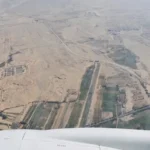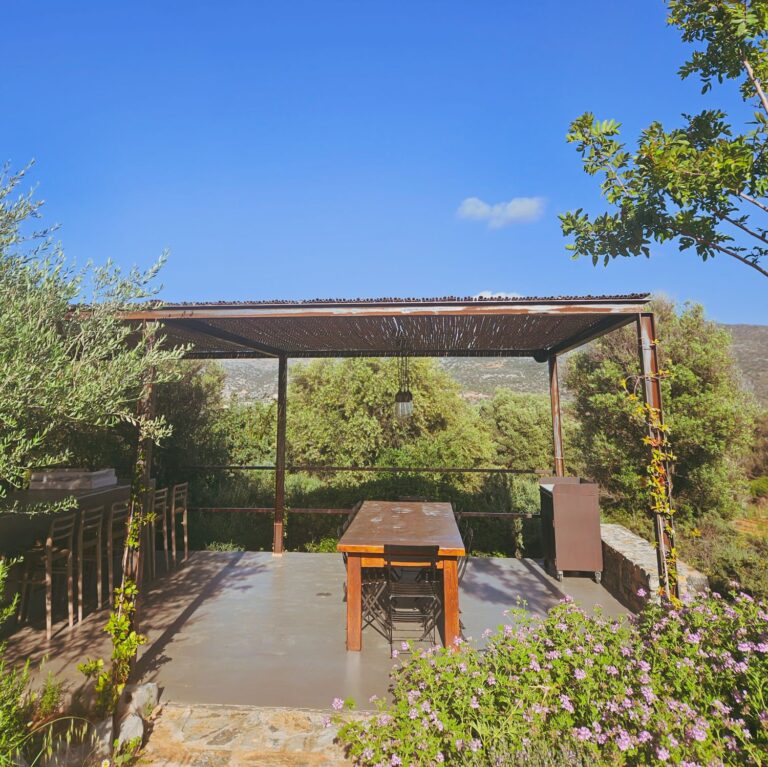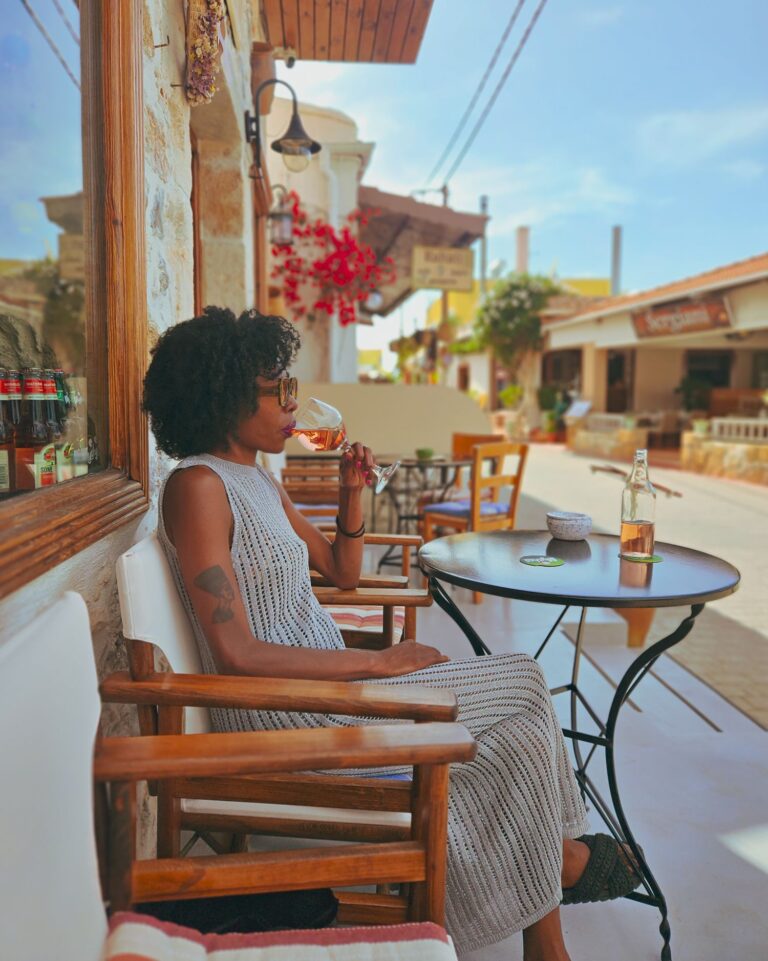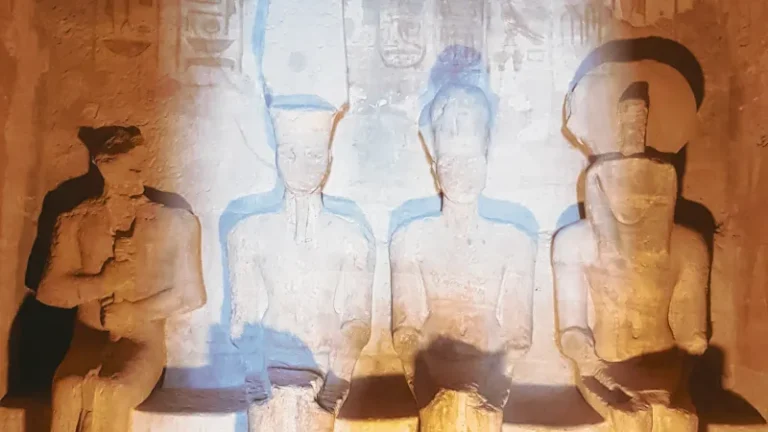Egypt’s ancient pyramids and enthralling mythology are steeped in mysticism. However, the country was a no-go for countless tourists after the January 25 Revolution in 2011 and considerable propaganda, but thankfully, tourism is back on the rise, and rightly so.
Between 1881 and 1952, the British ruled Egypt and took many antiquities and monuments. Consequently, this has contributed to there being more than 700,000 artefacts scattered around the world, as seen in places like The Louvre and the recent Tutankhamun exhibition at the Saatchi Museum in London.
Egypt is comparable to a university of life. At one point in history, and still to some extent now, the whole world looked to it, including infamous Greek and Roman philosophers. Egypt houses the most evidence of one of the oldest civilizations, and a trip here can be a life-changing experience.
I found the country very safe and had no problems travelling solo. It is relatively easy to get around, but some research is needed, especially if moving between cities.
Aside from the Great Pyramid of Giza, there is much to do and see. You can follow this Luxor to Aswan itinerary as closely or loosely as you like. In any event, I hope that it acts as a good starting point for planning your trip.
Flight
Egypt Air flies direct to Luxor from Heathrow on Mondays. They operate a dry plane, Egypt Air being an Islamic airline, but they are happy for you to drink your duty-free beverages whilst on board. Alternatively, British Airways flies into Cairo, from where you can get a domestic flight or sleeper train to your required destination.
Time of year and weather
December/January is peak season which means it can be tremendously busy, but the cooler temperatures make exploring tombs and temples a more comfortable experience.
March/April has perfect weather, with fewer people. Average temperatures during these times are between 21 – 25 degrees.
Hotel recommendation
The Hilton Luxor & Spa
If you like your accommodation more towards the opulent end of the scale, I recommend this 5-star accommodation. Located in the village of Karnak on the east bank of the Nile with splendid vistas, it is one of the best in Luxor.
The hotel is within walking distance to Karnak Temple and driving distance to other local attractions such as Valley of the Kings. The design is contemporary, with 236 guestrooms. Rooms are well-appointed, air-conditioned, minibar, DVD player, private balcony, 32-inch LCD television and quality Crabtree & Evelyn toiletries.
I highly recommend a Nile view room. Once you awaken and look out at the views, you will question whether you are still dreaming. The spa also provides a sanctuary after a long day of touring.
The hotel boasts eight stylish restaurants and lounges, and the two infinity pools give the sensation of swimming in the Nile with the Valley of the Kings beyond. The buffet breakfast has a huge selection and is available daily from 6 AM to 11 AM, included in the hotel price.

Luxor to Aswan Itinerary: Day 1
Hatshepsut Temple
Explore this major temple built in honour of girl power.
Arguably one of the most formidable women in ancient Egypt and celebrated for being Egypt’s first female pharaoh during the 18th dynasty, Hatshepsut was one of the few and most famous female pharaohs of Egypt.
With most statues portraying her wearing a false beard, historians suspect that she may have worn traditionally male attire when ruling as a Pharaoh.
The temple, commissioned by the Queen herself and designed by her royal steward and architect, Senemut (again a woman!) has three terraces, with the top-level having been reconstructed. The supporting walls are masked by long colonnades divided in the centre by access ramps.
The building appears to blend into the background of the yellow rocky cliffs which it sits under. It became one of Egypt’s greatest temples ever built.
Valley of the Kings
Visit the treasure trove that is the Valley of the Kings. This immense necropolis has tombs still being discovered. A visit feels like you are on an excavation site shown on a documentary on the history channel.
In the Old Kingdom, Egyptians built pyramids to serve as tombs for their pharaohs. Subsequently, in the Middle Kingdom, they dug into the cliffs in the Valley of the Kings.
It is believed that the abandonment of pyramid-building by the New Kingdom pharaohs was to better secrete the tombs from grave robbers. It should be noted that the Valley of the Kings is also pyramid-shaped and representative of the god Amun Ra so believed to be protected.

Entry into three tombs is included in the ticket price (Merenptah, Ramses IV and III).
The tombs are hugely impressive and grand, with long passageways full of hieroglyphs. Therefore, your head will turn, constantly, as there is something to see everywhere and much to take in.
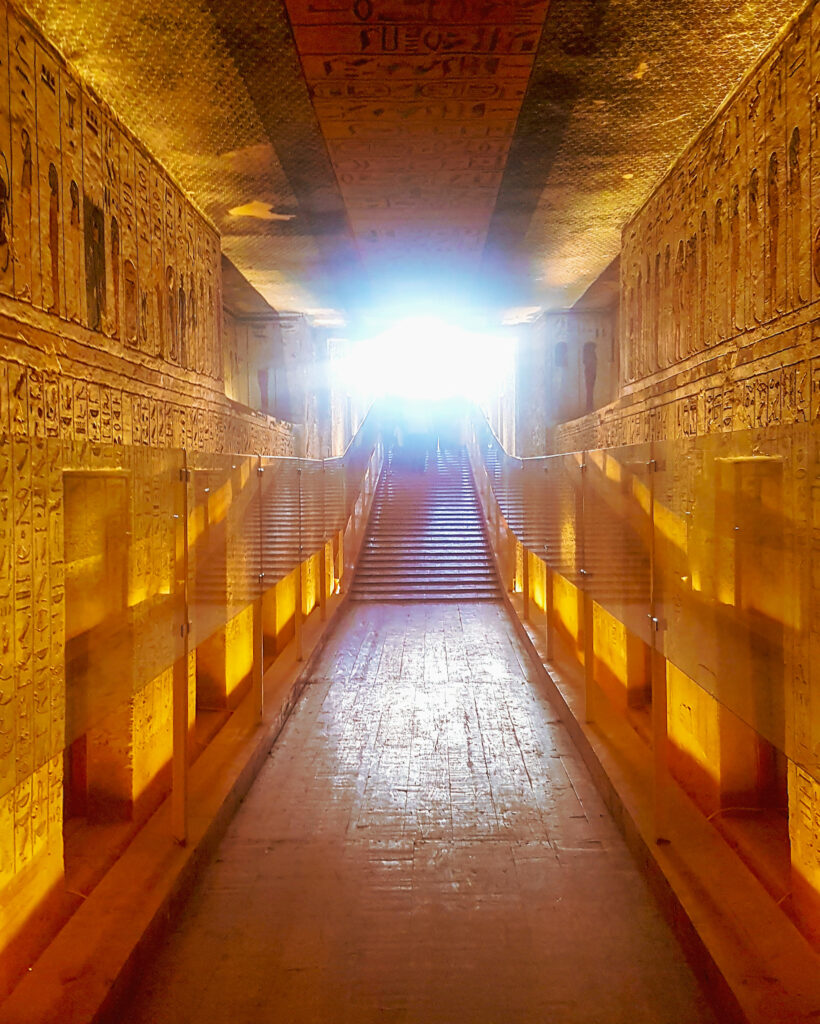
Additionally, for an extra EGP300, you can enter the tomb of Tutankhamun. In contrast to the others, this tomb is much smaller in size. As a result, it does not have a long corridor like the others. Accordingly, it was easier to find when unearthed by Howard Carter.
Though small, this was my favourite tomb to visit. It has a serene feel, and the Boy King’s mummy still resides inside. Shrunken in size, though minuscule, he is well preserved over 3,000 years later.
Colossi of Memnon
This quick stop is just off the road on the west bank. The two seated statues of Pharaoh Amenhotep III were built to guard his funerary temple and tower 60ft above the plains. Currently, the complex is still being excavated by archaeologists.
Sunset Nile Cruise
Glide along the Nile on a felucca or riverboat while taking in the sunset.
Feluccas are traditional wooden sailboats which have graced the Nile since the time of the Pharaohs.
The boats come in many different shapes and sizes with a canvas sail and often furnished with cushions around the circumference and a table fixed in the middle. Feluccas rarely have any form of engine and rely entirely on the breeze and the river’s current to sail.
Sail the still waters of the majestic Nile River while drinking in the stately views of ancient Egypt together with Egyptian tea. It is sure to make you appreciate the little things in life.
You can take the Felucca or boat from the Hilton at the cost of EGP400 for an hour.

Tour company recommendation: (https://www.egypttailormade.net)
Luxor to Aswan Itinerary: Day 2
Karnak Temple
Also known as the Temple of Amun, Karnak Temple is rightly a dominant highlight in Luxor. Also, it is one of the largest religious buildings in the world and still capable of dwarfing many wonders of the modern world.

Feel like Egyptian royalty as you enter the complex through an impressive parade of ram-headed sphinxes flanked on both sides. The 20 rams, built to protect the temple, symbolise the god Amun.
Subsequently, upon entering the Great Hypostyle Hall, it will be hard not to be awestruck by the 134 ginormous intricately carved sandstone columns. The 12 larger columns stand 80 feet (24m) high, lining the central aisle.
If possible, plan your visit for sunrise or sunset. The temple is designed and positioned to watch the sun (Ra) rise. Additionally, the Sacred Lake is symbolically significant to the ancient Egyptian’s concept of creation. Once used by priests for ritual cleansing, it represents the primal waters from which life arose.
This shrine is a powerhouse with the most spiritual energy, be sure not to miss it.
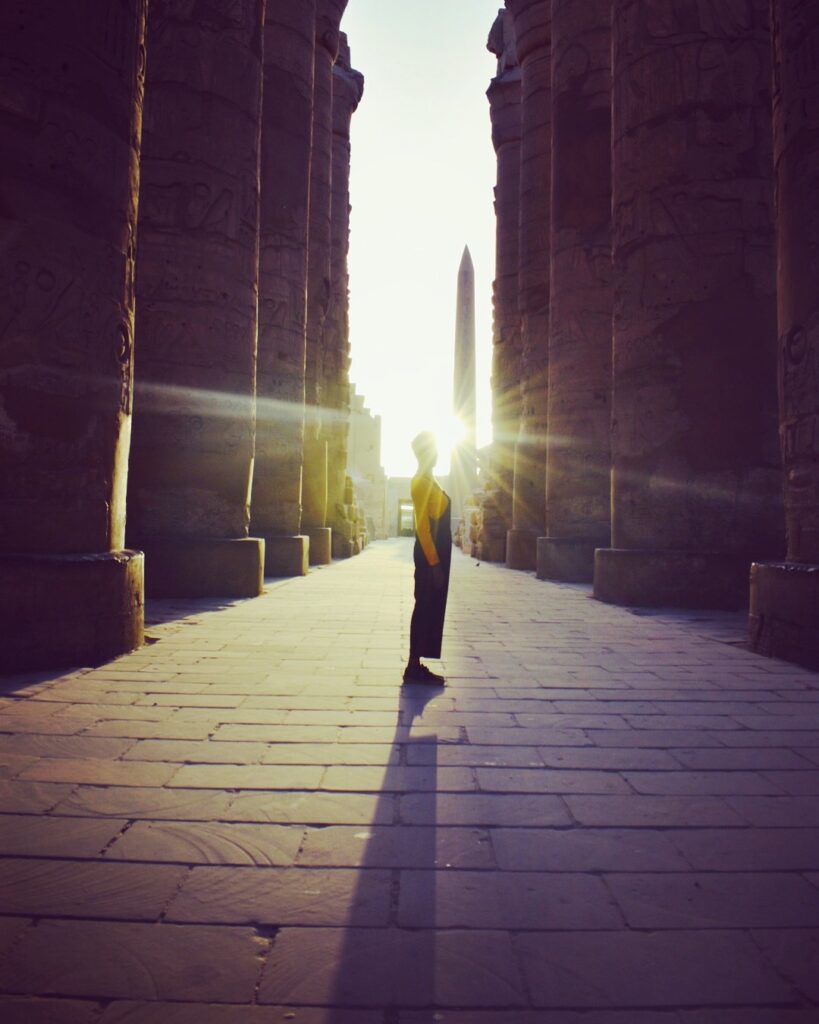
Take a transfer from Luxor to Aswan by plane, train or automobile. I chose the latter, and it’s a great way to see a real, rugged, and scenic side of Egypt.

Stop on the way at the Temple of Horus at Edfu and Kom Ombo.
Temple of Horus
This temple is dedicated to Horus, the son of Isis and Osiris. It’s in admirable condition and is known to be one of the best-preserved temples in Egypt.
The ancient Egyptians believed the temple was built on top of the location where the infamous battle between Horus and his uncle Seth took place.
Two hundred years ago, the temple was buried in sand and rubble and homes were built on top of it until excavated in the 1860s. Fortunately, the sand protected the monument over the years, leaving it very well preserved today.
There is a marked difference in buildings of this later period which have a very noticeable Greek influence. The Greeks had more impact in Egypt than the Romans, even though the Romans ruled longer.
The building is in stark contrast to earlier dynasties and looks more European. If I’m honest, it’s a bit like something “made in China”. Being built between 237 and 57 BC, it is a newcomer in the extensive scale of ancient Egypt’s history.
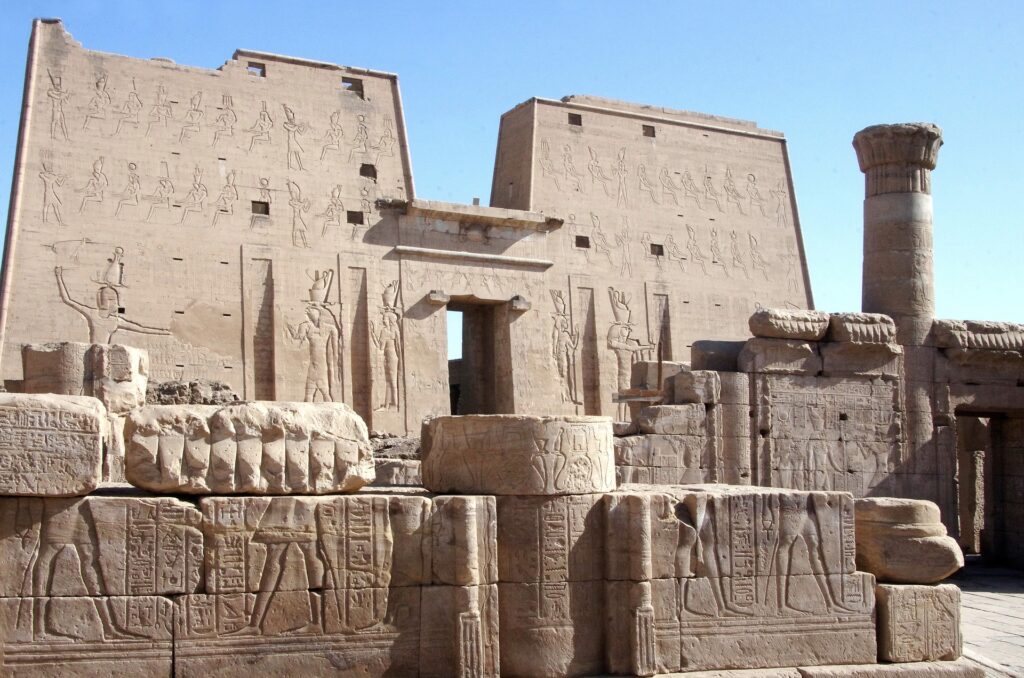
Kom Ombo
Just 30 miles north of Aswan, in a still panoramic setting elevated above the sea, you will find the unusual double temple of Kom Ombo. A temple dedicated to the gods Sobek (God of Crocodiles) and Horus.

When the Romans took control of Egypt, they impressed their mark on this temple as well. This is illustrated in the reliefs in the forecourt, showing the Roman emperor Tiberius making offerings.
Upon entering into the main court, there are 16 painted columns – eight on each side – and a well in front of the main entrance, once used as a Nilometer.
Interestingly, the temple also features a unique engraving thought to be among the first representations of medical and surgical instruments.

A massive number of crocodiles once meandered this area, and more than 300 crocodile mummies were found at Kom Ombo temple. However, as a totem animal and object of worship, it was believed they would not attack.
Captive crocodiles were kept within the temple, and many mummified crocodiles were found in cemeteries. Some now reside in the nearby Crocodile Museum, where you will even find mummified crocodile eggs.

Luxor to Aswan Itinerary: Day 3
Abu Simbel
It’s an early rise for a trip to the infamous Abu Simbel, but trust me, it will most definitely be worth it! The drive, approximately 3 – 4 hours from Aswan, is close to the Sudan border.
The road passes nothing but desert, and I only saw one shop en route. However, I did sight numerous mini pyramids and a captivating mirage!

The colossal Abu Simbel is a glorious example of Nubian history. The four mammoth structures of Ramses II, in front of the main temple, will have you craning your neck.
The temple is carved into rock and was salvaged in the 1960s when the High Dam in Aswan was constructed and relocated to high land.

The entranceway to the temple was built such that, twice a year, on October 22 and February 22, sunlight shines into the inner sanctuary and illuminates three of the four statues (Ptah, Amun-Ra, Ramses, and Ra-Horakhty) seated on a bench. It fittingly leaves the statue of Ptah, the god of darkness, in shadow.
Historians think these dates mark the King’s coronation and birth.

The Temple is part of the UNESCO World Heritage Site known as the ‘Nubian Monuments’, which runs from Abu Simbel downriver to Philae (near Aswan).
One not to be missed. You’ll see numerous hieroglyphics while travelling Egypt, but the magnitude of those at Abu Simbel are jaw-dropping!
Luxor to Aswan Itinerary: Day 4
Philae Temple
Often referred to as the Temple of Isis, Philae Temple is dedicated to the infamous Goddess Isis, the wife of Osiris and mother of Horus.
Completed around 690 AD, Philae Temple is again relatively new in comparison to many Egyptian monuments. However, in its heyday, it was believed by both Egyptians and Nubians to be one of the most sacred of all temples. This is due to the belief that Osiris was buried on the island where the temple stands.
A visit requires a short boat ride over to the island, during which you will glimpse the temple long before docking.

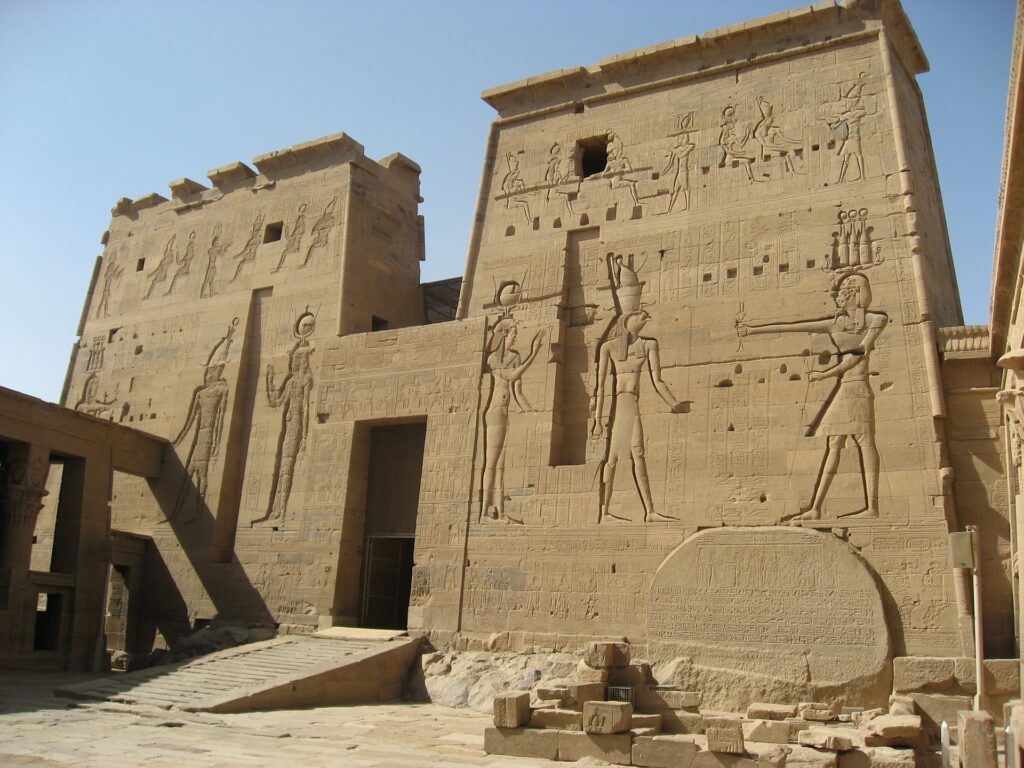
Nubian Museum
The history of Nubia can be pieced together with a trip to the Nubian Museum in Aswan. The museum, built by UNESCO, aims to help bring Nubian culture back to life.
Due to flooding, much of Nubia’s history – especially smaller monuments – went underwater with the erection of the Aswan high dam in the 1960s. The museum now houses many of the artefacts uncovered on sites that have since been submerged by the waters of the High Dam.

Luxor to Aswan Itinerary: Day 5
Hot air balloon ride over the Valley of the Kings
Have you ever taken a hot air balloon ride? If not, what better place to take one than over the Valley of the Kings! You’ll get an excellent bird’s eye view over the historical monuments, and the sun rising is the icing on an already splendid cake.
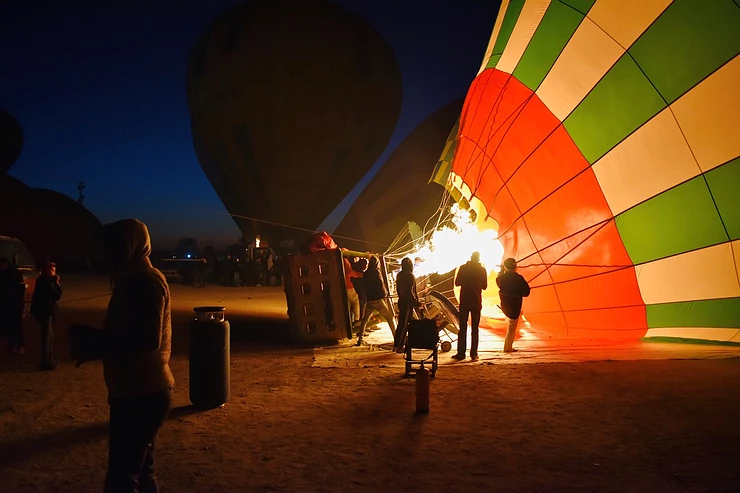

Egypt is an enthralling, magical place with something for everyone at a reasonably price. I have no doubt that your time there will be a fulfilling, adventurous holiday.
It’s impossible to see the whole of Egypt in such a short space of time, but hopefully, this Luxor to Aswan itinerary hits some of the main attractions and some of those less familiar in the south.
If you enjoy this post, please subscribe to Queen on a Journey by email, leave a comment below, and share. Thanks for visiting.




